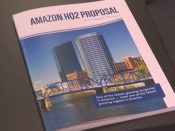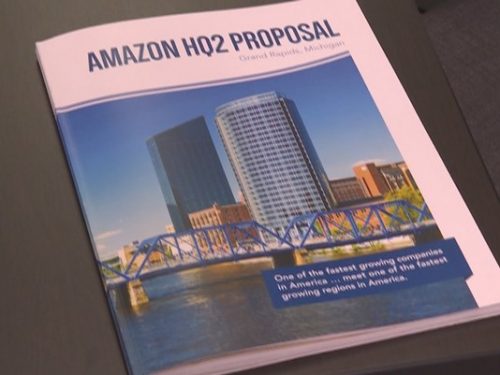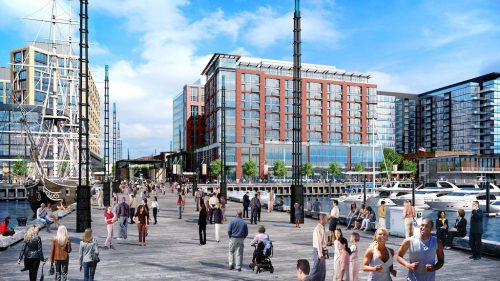

It has been just over a month since Amazon announced that it would be building a second corporate headquarters. Since that announcement, the industry has been abuzz as to what lucky city will earn the right to host the new headquarters and what incentives they would have to provide in order to woo the tech giant. Dubbed HQ2, the project would create 50,000 new fulltime jobs at an average pay rate over $100,000 per year and would lead to an investment of $5 billion in capital costs[1].
In looking at the RFP published by Amazon you can see that are there several attributes that the company notes as of utter importance when looking for a new location for their headquarters.
- Metropolitan areas with more than one million people
- A stable and business-friendly environment
- Urban or suburban locations with the potential to attract and retain strong technical talent
- Communities that think big and creatively when considering real estate options
- A dedication to sustainability design and connectivity
- The presence and support of a diverse population
Although Amazon has made a large impact on the real estate community since their announcement, this criterion set forth in their RFP is not unique to Amazon. Many companies also see these issues as important to their sustained success. These are some of the same attributes that companies have been looking to establish for quite some time now. Developers should take note of this criterion if they are looking to attract the best tenants, especially from the technology sector. As we move forward, a work environment that fosters a live/work/play environment will be much more essential.
The tech sector continues to be important in driving current office demand. This year, the top 10 cities of office absorption have included tech centered markets such as Santa Clara, Brooklyn, Seattle, Raleigh/Durham and San Diego[2]. The technology sector is comprised of millennials who have a different set of priorities from previous generation when selecting an employer.
This movement towards a more integrated work environment of master planned communities that includes restaurants, retail, and parks is not new. This movement has been evolving for some time. Amazon’s RFP for its HQ2 does however remind us of the importance of these types of workplace developments. From Amazon’s RFP, we can see that metropolitan areas will be in the best position to attract technology companies. Moody’s has ranked the cities that they deem as best poised to get Amazon’s new headquarters and the top ten includes well established urban centers, such as Austin, Atlanta, Philadelphia and New York[3]. Cities provide many of the characteristics that tech companies need to attract top talent. They have well established universities that provide a stable pipeline of talent. Many cities have established sustainable comprehensive plans that address environmental issues. They have also developed plans that include multimodal forms of transport. All these factors are important to the workforce of the future.

Given the need to provide an integrated work environment the development of large integrated districts that promote the live/work/play concept are continuing to take shape. Cities, in consort with private developers, are investing millions of dollars to develop these districts as a way of attracting the businesses of the future. Earlier this month, marked the opening of the District Wharf in Washington DC. Developed by a partnership between PN Hoffman and Madison-Marquette, this project includes $2.5 billion in new office space, condos and apartments and retail as well as 14 acres of park and public spaces. In collaboration with the developers, the District invested almost $200 million in infrastructure, such as sewers and roads. On the same a day as the opening of the District Wharf members of Cornell’s Associate Real Estate Council (AREC) were touring the Hudson Yards project in New York. Developed by Related the project sits on 28 acres and will include over 6 million square feet of office space alongside a retail center with two levels of restaurants, cafes, markets and bars, a hotel, a cultural center, about 5,000 residences, a school, and 14 acres of public open space. Projects like these that incorporate working and living in the same area are becoming common place and will surely be attractive to companies like Amazon.
The approach of integrative work space is not new. Projects that incorporate a mixed design have been evolving for quite some time. However, the criterion set out by Amazon for their new HQ2 reasserts the importance for comprehensive development that integrates a complete lifestyle focus. In talking to Martin Stern – Senior Managing Director of CRBE in Chicago who has worked on several proposals for the Amazon HQ2, he notes that “Not every city has what Amazon wants.” and in putting together a proposal “Cities are focusing on their strengths”. Even if cities are unsuccessful in their pursuit of Amazon they can still use this an opportunity to reassess the need to provide the type of live/work environment that is essential in attracting companies for the foreseeable future.
[1] https://images-na.ssl-images-amazon.com/images/G/01/Anything/test/images/usa/RFP_3._V516043504_.pdf
[2] https://www.cpexecutive.com/post/economy-watch-tech-sector-driving-office-demand/
[3] https://www.economy.com/dismal/analysis/commentary/298322/Metro-Analysts-on-Amazons-Top-Cities/
